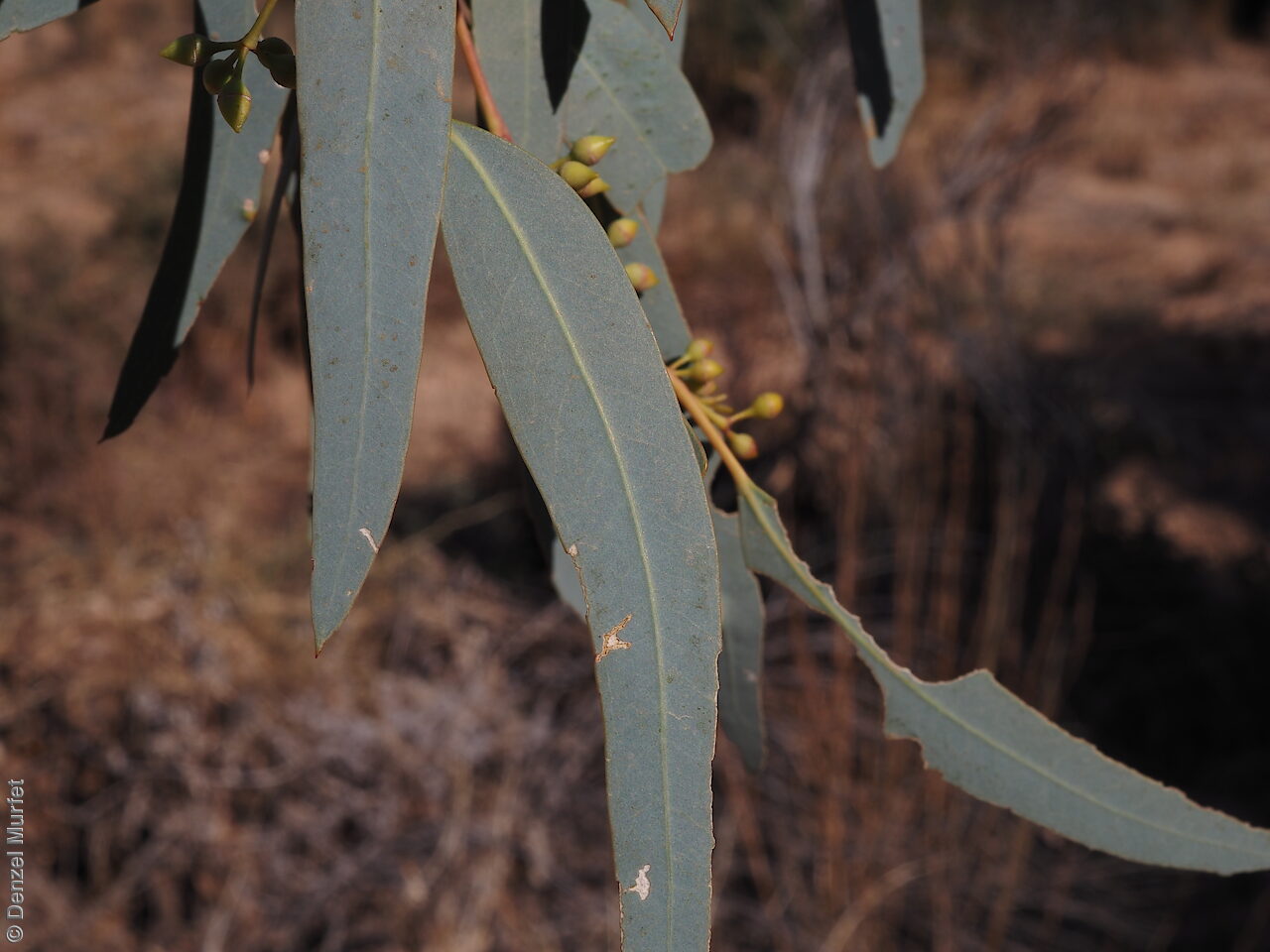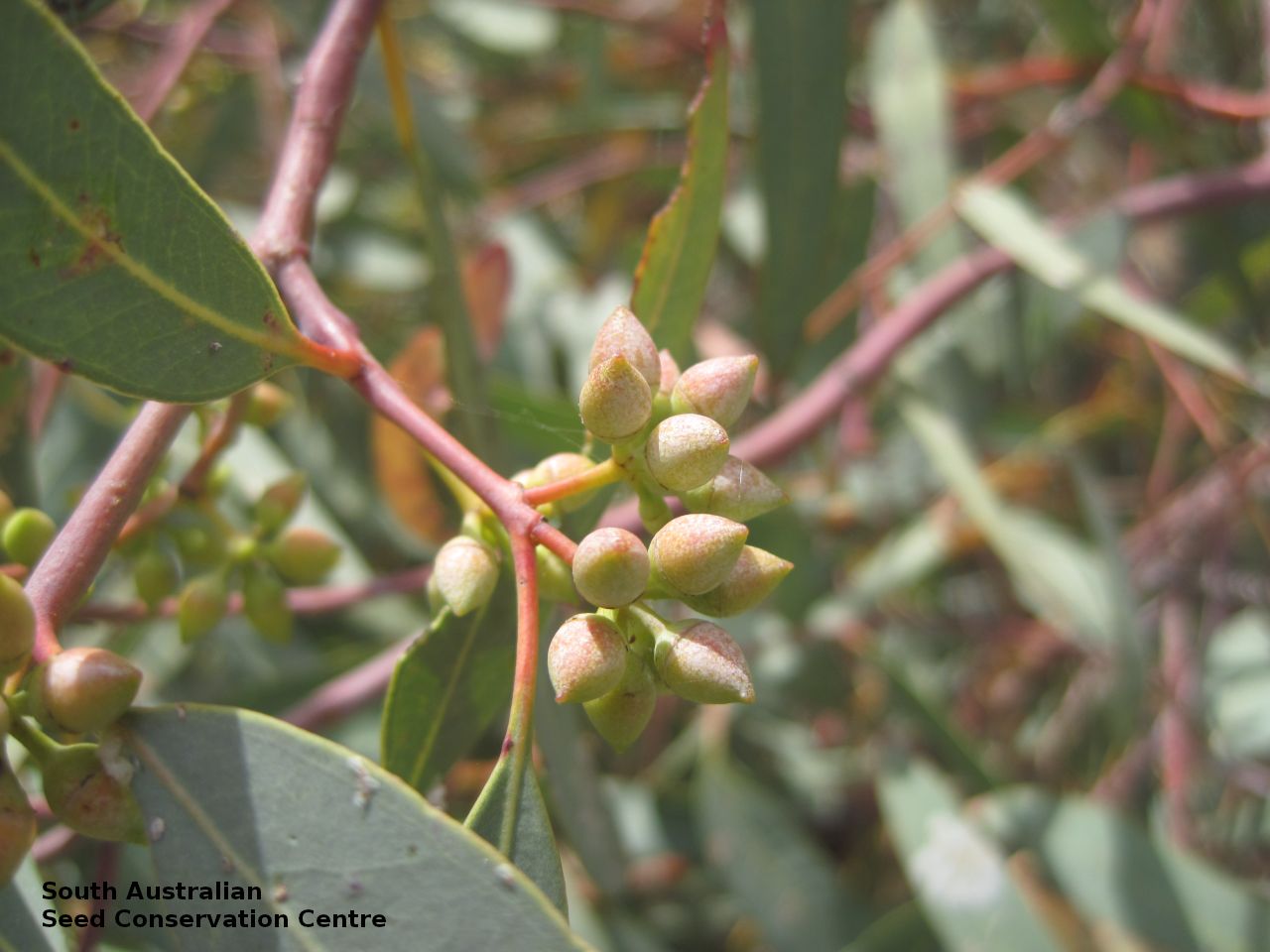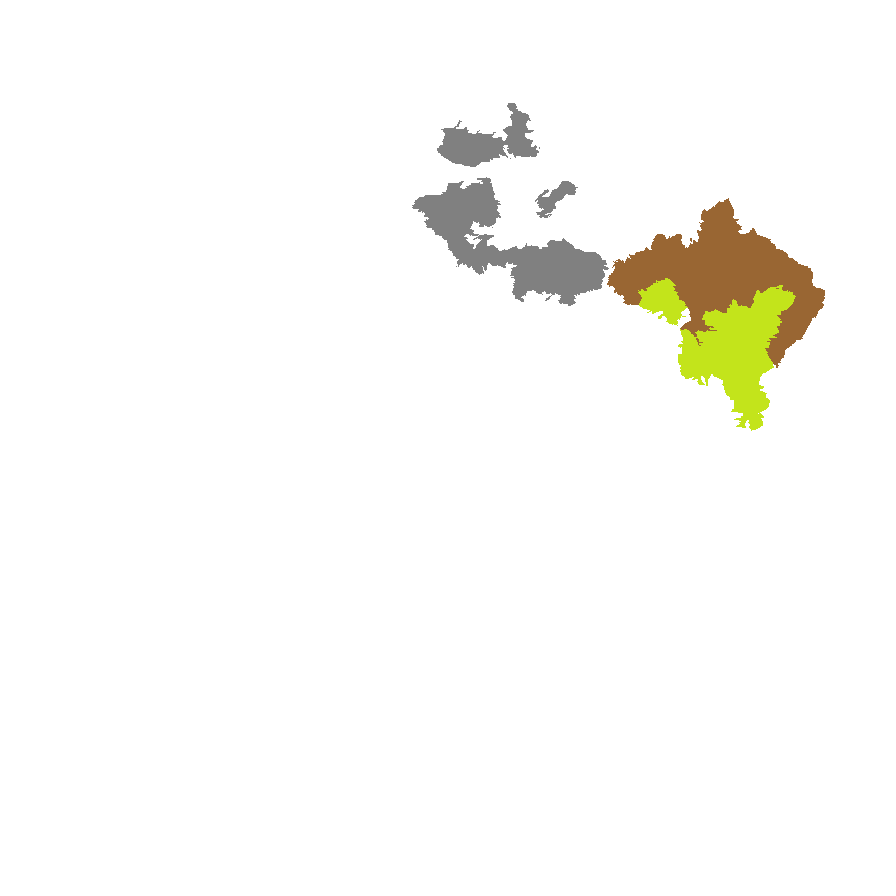

















Botanical art
Prior names
Eucalyptus rostrata, partly
Eucalyptus camaldulensis var. obtusa, partly
Eucalyptus camaldulensis var. camaldulensis, partly
Common names
Finders Ranges River Red Gum
River Red Gum
Red Gum
Etymology
Eucalyptus from the Greek 'eu' well and 'calyptos' covered; alluding to the cap or lid which covers the stamens in the bud. Camadulensis named after an abandoned monastery in the district of Camalduli in Italy where a tree was grown from seeds collected from south-eastern Australia. Frederick Dehnhardt, Chief Gardener at the Botanic Gardens in Naples used material from this tree to describe the species in 1832. The exact collection location of the seeds is unknown. Minima from the Latin 'minimus' meaning small; referring to the smaller size of the buds and fruits in comparison to the other subspecies of E. camaldulensis.
Distribution and status
Endemic to South Australia and found in the Flinders Ranges and the Olary Spur, growing along creeklines and associated flood-out plains, with an isolated population in Bascombe Well Conservation Park on Eyre Peninsula growing in shallow depression on sheet limestone. Native. Common in South Australia.
Herbarium regions: Flinders Ranges, Eastern, Eyre Peninsula, Northern Lofty
AVH map: SA distribution map (external link)
Plant description
Single-stem tree to 45 m tall with smooth, pinkish-red to creamy bark throughout and some thick, plate-like bark at the base. Juvenile leaves opposite initially, ovate to broad-lanceolate, pruinose, blue-green to bluish. Adult leaves lanceolate to falcate, to 130 mm long and 20 mm wide, blue-green to bluish. Inflorescence axillary cluster with 7 creamy-white flowers. Bud smooth, to 7 mm long and 7 mm wide, bud-cap conical with a long beak equal to or longer than the base. This subspecies differ from the other two subspecies found in South Australia by having relatively smaller buds with conical beaked cap and smaller fruits. Flowering between October and December. Fruits are woody, hemispherical to ovoid fruit to 7 mm long and 6 mm wide, on individual stalk with ascending disk, valves 3-4 exserted above the rim. Seeds are yelow-brown irregularly shaped seed. Seed embryo type is folded.
Seed collection and propagation
Collect seeds between December and March. One of the few eucalypt species that release their seeds. As a result monitoring of mature fruits is necessary. Collect mature fruits that are dark and hard (difficult to break with a finger nail), with the valves un-open. Leave the fruits in a breathable container in a dry room for one to two weeks. This allows the valves on the fruit to open and release the seeds. Separate the seeds by placing all the materials into a bucket and shaking it to dislodge the seeds. Pass the material through a sieve to separate the unwanted material. The finer material will contain both seeds (soft) and frass (hard) usually distinguishable from each other but can be very similar in shape and colour. With finer sieves, the seeds can be separated from the frass but this is not essential for storage or propagation. Store the seeds with a desiccant such as dried silica beads or dry rice, in an air tight container in a cool and dry place. Seeds are non-dormant, viable seed should germinate readily.